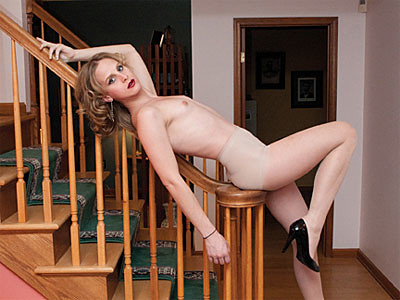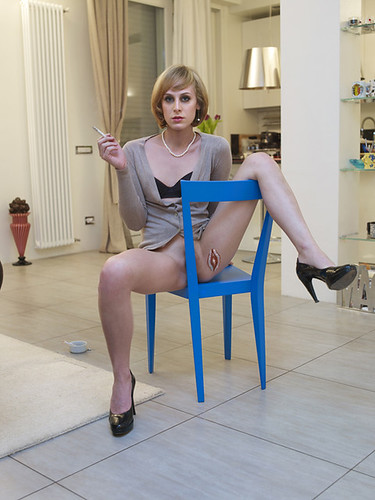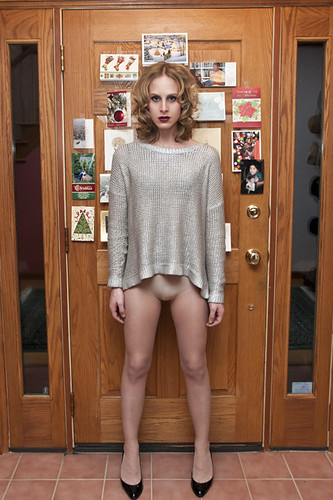Translady Fanzine is a fine art photographic periodical, that in its first issue, features high-gloss portraits of video and performance artist Zackary Drucker. Amos Mac, editor and founder of the trans male quarterly Original Plumbing, is both photographer and publisher. Photographs are taken from the collaborative series "Distance is Where the Heart Is/Home is Where You Hang Your Heart" documenting a visual memoir of Drucker's early life in locations shot in and around her family's home in Upstate New York. Drucker writes in TF: "How can we have fans if we don't exist? How do we know we exist without visual affirmation?"
In December 2010, the artists spent a weekend snowed-in, staying up late drinking coffee and black tea, composing photographs that would later appear in the 9 x 13" pages of Translady Fanzine, ranging in tone and content from, PHOTO: near a snow covered graveyard, Drucker stands off to the side like a stray mourner to, PHOTO: Drucker in her underwear with hands and knees on a doily on top of her parents dining room table. A trained photographer herself, Drucker uses her own image as the centre of her work, often collaborating with other artists, such as Manuel Vason, as in the photograph below entitled, "Don't Look at Me Like That"on display in Los Angeles earlier this month.
While shopping in an adult store in the West Village, Mac stumbled upon the 1990s magazine Transsexual Illusion, inspiring the creation of Translady Fanzine after the photo series was complete. In Transsexual Illusion, images are taken by and of trans women, and even though Mac IDs as a trans man, he felt a kinship with the work. At first, Translady Fanzine appears to be Mac's trans female counterpoint to the trans male quarterly Original Plumbing. Yet, OP is "a community-based magazine that is designed to feature and create visibility for trans guys by trans guys." Why, I wonder, is Translady Fanzine claiming within its self-explanatory title to be about trans women, but unlike OP and TI, does not use a trans woman photographer and/or publisher?
A photograph of Zackary Drucker and Amos Mac from Mac's Tumblr not shown in Translady Fanzine.
Drucker, in a letter to Mac (published in TF) provides a few possible answers: “Trans women have yet to redefine themselves as a vital unified community, and our visibility is in dire need of reinvention.” In a review of TF by Michelle Tea for Huffington Post, Tea explains that Translady Fanzine is not attempting to represent the range of trans female culture, but rather showcase the words and image of one woman of trans experience per issue (Drucker's writing takes up 2 out of 23 pages). Simply put: it is a fanzine not for and made by trans women, but for and made in collaboration with trans women and their fans. Drucker writes:
We need more fans because we live with barriers intact, because we are evolving faster than our culture can perceive, because shame is a scavenger bitch eating us from the inside out, because we are beautiful survivors and we deserve it.
What is perhaps radical about Translady Fanzine is not altogether obvious when observed from a queer/feminist cultural viewpoint. The production quality and traditional beauty of Drucker could land many of the photos in a mainstream high-fashion magazine...and what isn't radical about that? They are images of one contemporary trans woman that allow her and the viewer to transcend the common narrative associated with her trans experience.
For more information on Translady Fanzine and to order a limited-edition copy, visit: http://www.transladyfanzine.com
Previously: Coco Riot, Eve Arnold



